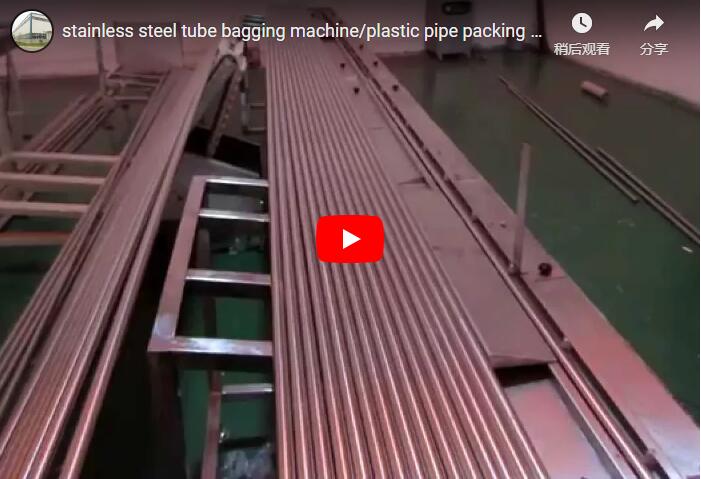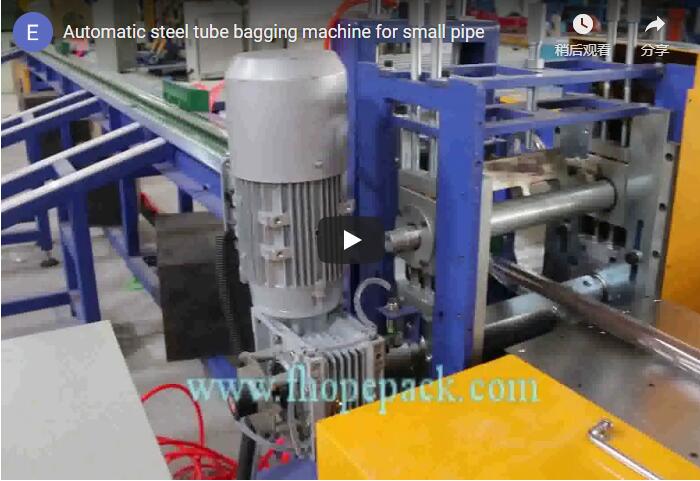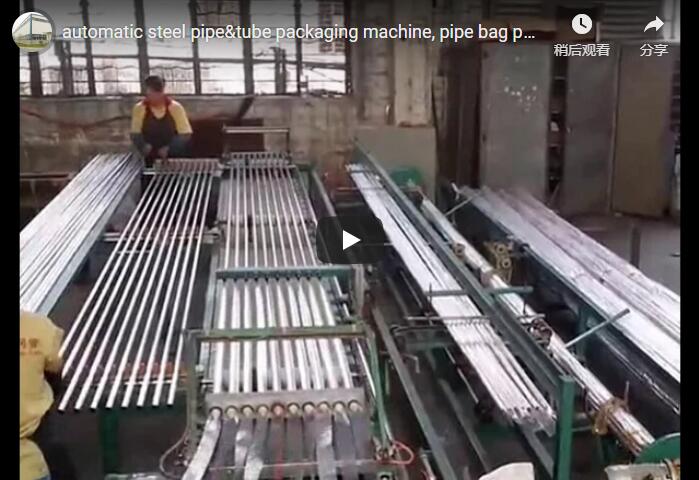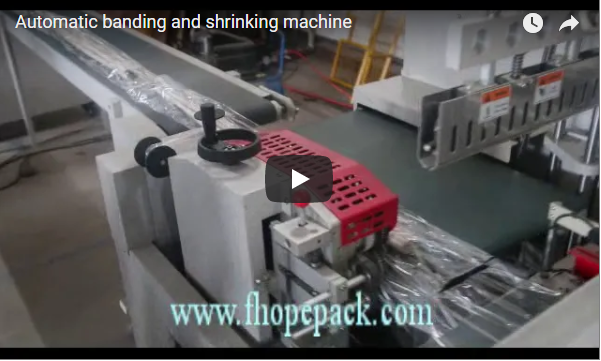Engineering Efficiency: A Technical Look at Automated Steel Tube Bagging and Bundling Systems
The handling and packaging of steel tubes present significant logistical challenges across industries ranging from construction and automotive manufacturing to energy infrastructure. Manual processes are often labor-intensive, prone to inconsistencies, increase the risk of product damage, and pose ergonomic hazards. Addressing these challenges requires sophisticated automation, exemplified by the automatic steel tube bagging and bundling machine – a critical component in modernizing steel processing and distribution workflows.
The Imperative for Automation in Steel Tube Packaging
Traditional methods of packaging steel tubes involve manual collation, insertion into protective bags, and subsequent bundling or strapping. This approach suffers from several drawbacks:
- Low Throughput: Manual handling inherently limits packaging speed, creating bottlenecks in production lines.
- Inconsistent Quality: Variations in manual wrapping and bundling can lead to poorly secured packages, increasing the risk of damage during transit and storage. Research indicates inconsistent strapping tension can compromise bundle integrity, particularly under dynamic loading conditions (Source: Packaging Technology and Science).
- Labor Costs & Safety: Manual lifting and manipulation of heavy steel tubes contribute significantly to labor costs and expose workers to musculoskeletal injury risks. OSHA guidelines emphasize engineered controls to mitigate such hazards.
- Material Waste: Manual application of bagging film and strapping can lead to excessive material consumption.
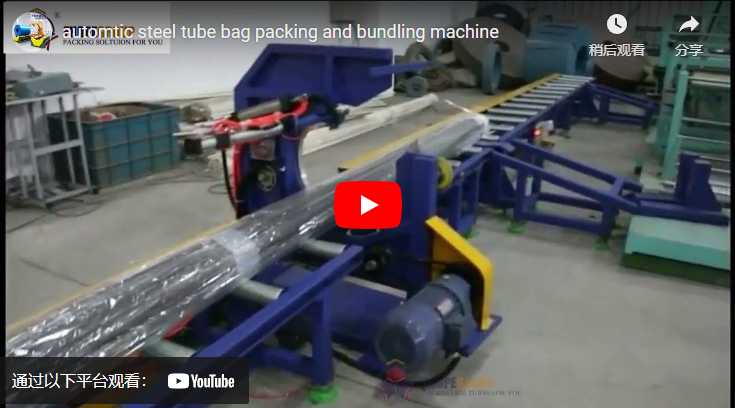
qq截图20230713152627
Automated systems directly address these issues, aligning with lean manufacturing principles and the growing demand for higher efficiency and traceability in supply chains.
Technical Breakdown: Mechanism and Control
Automated steel tube bagging and bundling machines integrate several subsystems, orchestrated by a central programmable logic controller (PLC). Key operational stages typically include:
1. Infeed and Collation System
Steel tubes are received from upstream processes (e.g., cutting, finishing) via roller or chain conveyors. Sensors detect tube presence and dimensions. Advanced systems may employ servo-driven mechanisms or robotic arms for precise alignment and collation into predetermined bundle configurations (hexagonal, square). This stage is critical for ensuring consistent bundle geometry, a factor often optimized using simulation modeling techniques (cf. International Journal of Advanced Manufacturing Technology).
2. Automatic Bagging Unit
Once collated, the tube bundle is transferred to the bagging station.
- Film Dispensing: A roll of polyethylene (PE) or other suitable protective film is automatically unwound.
- Bag Formation: The machine forms a bag around the bundle, often using heat-sealing bars. Innovations in sealing technology, sometimes drawing from material science research (e.g., ultrasonic sealing for specific film types), ensure seal integrity and speed. Patent literature often details novel film feeding and sealing jaw designs aimed at reducing cycle times and improving seal quality (e.g., variable temperature profiles based on film thickness).
- Cutting: The formed bag is precisely cut from the continuous film roll.
3. Bundling and Strapping Module
The bagged bundle proceeds to the strapping station.
- Strap Feeding: Polypropylene (PP) or polyester (PET) strapping is fed around the bundle at pre-set locations.
- Tensioning: The strapping is automatically tensioned to a programmed level, crucial for bundle stability. Research into strapping mechanics informs optimal tension settings to prevent tube damage while ensuring secure containment.
- Sealing: The strap ends are joined, typically via heat sealing or friction welding.
- Cutting: The strap is cut, completing the bundling process. Multiple straps are usually applied per bundle.
4. Control System and Integration
The entire process is governed by a PLC, interfaced with a Human-Machine Interface (HMI) for parameter setting (bundle size, number of straps, tension levels) and diagnostics. Sensors (photoelectric, proximity, laser measurement) monitor tube/bundle position and process status. Modern systems often feature capabilities for integration into plant-wide Manufacturing Execution Systems (MES) via protocols like OPC UA or EtherNet/IP, enabling data logging, remote monitoring, and alignment with Industry 4.0 initiatives.
Key Performance Parameters and Design Considerations
Evaluating these systems involves assessing several key metrics:
- Throughput: Typically measured in bundles per hour or seconds per cycle (e.g., 15-60 seconds per bundle, depending on size and complexity).
- Tube Specifications: Range of acceptable tube diameters (e.g., 10mm - 150mm) and lengths (e.g., 3m - 12m).
- Bundle Configuration: Maximum bundle weight (e.g., up to 5000 kg) and dimensions. Programmable bundle shapes (hex, square, round).
- Packaging Materials: Compatibility with various bagging films (thickness, type) and strapping materials (width, strength).
- Changeover Time: Time required to adjust the machine for different tube sizes or bundle configurations. Quick-change mechanisms are a key design focus.
- Reliability & Maintainability: Robust construction, use of high-quality components (motors, bearings, sensors), and ease of access for maintenance are critical, often guided by FMEA (Failure Modes and Effects Analysis) during the design phase.
- Safety: Compliance with international safety standards (e.g., ISO 13849, ANSI B11) through appropriate guarding, interlocks, and emergency stop systems.
Advantages Beyond Core Automation
The benefits extend beyond simple speed and labor reduction:
- Enhanced Product Protection: Consistent bagging minimizes surface scratches, contamination, and atmospheric corrosion during storage and handling.
- Improved Logistics: Uniformly shaped and securely strapped bundles are easier to handle with forklifts, stack efficiently in warehouses, and optimize transportation loading.
- Reduced Material Waste: Automated control optimizes film length and strap usage compared to manual methods. Some systems incorporate algorithms to minimize waste based on bundle dimensions.
- Data Logging and Traceability: Integrated control systems can log production data for each bundle (time, date, parameters, quantity), supporting quality control and traceability requirements.
Industry Applications
These automated systems are indispensable in facilities producing or processing large volumes of tubes, including:
- Steel Mills and Service Centers
- Automotive Component Manufacturing (e.g., exhaust pipes, chassis elements)
- Construction Material Suppliers (e.g., scaffolding, structural tubing)
- Furniture Manufacturing
- Hydraulic and Pneumatic System Tubing Producers
Future Perspectives
Ongoing developments focus on increased flexibility, intelligence, and sustainability. Potential advancements include:
- Robotic Integration: Using robots for more complex collation patterns or handling tasks.
- AI-Driven Optimization: Machine learning algorithms to dynamically optimize cycle times, material usage, or predict maintenance needs based on sensor data.
- Sustainable Materials: Adapting machines to effectively handle biodegradable or recycled-content packaging films and straps.
- Enhanced Vision Systems: Implementing machine vision for quality inspection (e.g., checking seal integrity, verifying bundle configuration).
In conclusion, the automatic steel tube bagging and bundling machine represents a significant engineering achievement that directly addresses key operational challenges in the steel industry. By integrating robust mechanical design with sophisticated control systems, these machines deliver substantial improvements in efficiency, product quality, safety, and logistical performance, making them a vital investment for competitive manufacturing and distribution operations.
For detailed specifications and configurations of such advanced packaging solutions, explore options like the Automatic Pipe Bundle Packing Line.

